Elecampane Plant
- March 26, 2024
- 0 comment
Elecampane Plant, known botanically as Inula helenium, is a perennial herb native to parts of Europe and Asia, recognized for its large, daisy-like yellow flowers and robust growth. This plant, standing up to 5 feet tall, is not only an eye-catcher in gardens but also a storied herb in traditional medicine. The large, downy leaves and branching roots of Elecampane give it a distinctive presence, both in wild meadows and cultivated gardens.
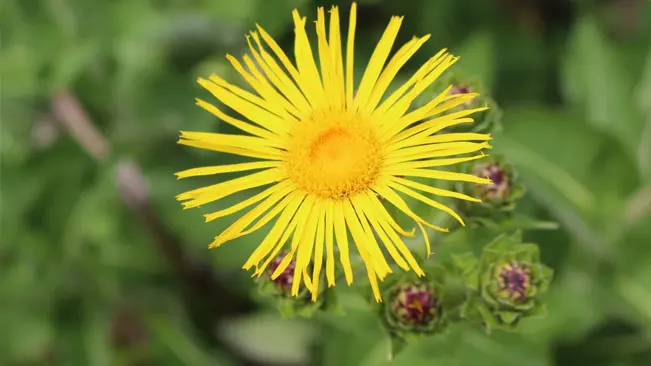

Historically, Elecampane Plant has been revered for its medicinal properties, with a particular focus on respiratory and digestive health. The roots contain inulin and helenin, compounds thought to have therapeutic benefits, and have been used in various herbal remedies since ancient times. This fascinating plant bridges the gap between natural beauty and herbal utility, making it a subject of interest for herbalists and garden enthusiasts alike.
Characteristics of Elecampane Plant
| Characteristics | Description |
| Scientific Name | Inula helenium |
| Common Names | Elecampane, Horse-heal, Elf-dock |
| Family | Asteraceae Family |
| Native Region | Native to Europe and Asia. |
| Plant Type | Perennial herb |
| Size | Typically 90-150 cm (35-59 inches) tall. |
| Leaves | large, toothed, green on top, and woolly white underneath. |
| Flowers | Large yellow daisy-like flowers, up to 5 cm across, bloom in summer. |
| Propagation | Primarily by division of roots or from seed. |
| Drought Tolerance | Moderate drought tolerance. |
| Cultural Uses | Historically used for medicinal purposes, especially for respiratory and digestive issues; also used in confectionery. |
| Ecological Role | Attracts pollinators like bees and butterflies, enhancing biodiversity. |
| Notable Species | Elecampane Plant is the primary species of its genus with significant historical and medicinal value. |
| Hardiness Zones | Thrives in USDA hardiness zones 3 through 7. |
| Growth Rate | Elecampane Plant grows moderately to quickly each season. |
| Lifespan | Can live several years, forms a substantial clump over time. |
Botanical Beauty of “Elecampane Plant”
Elecampane Plant, with its vivid yellow flowers, stands as a jewel in any garden setting. Its large, daisy-like blooms not only add a splash of sunshine to the landscape but also evoke a sense of old-world charm. The contrast between its lush green leaves and bright flowers makes it a visually striking addition to any floral arrangement.

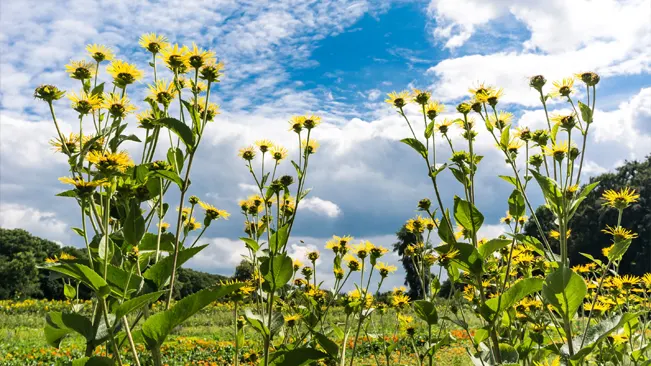
Woodland Elegance
In woodland gardens, Elecampane Plant brings a touch of wild elegance with its tall stature and large, sunny flowers. Its natural grace blends seamlessly with the woodland setting, enhancing the area’s natural beauty with a distinct presence of plants.
Ecological Importance
Elecampane Plant plays a crucial ecological role, particularly in attracting pollinators like bees and butterflies. Its presence supports local biodiversity, making it an essential component of a healthy ecosystem.
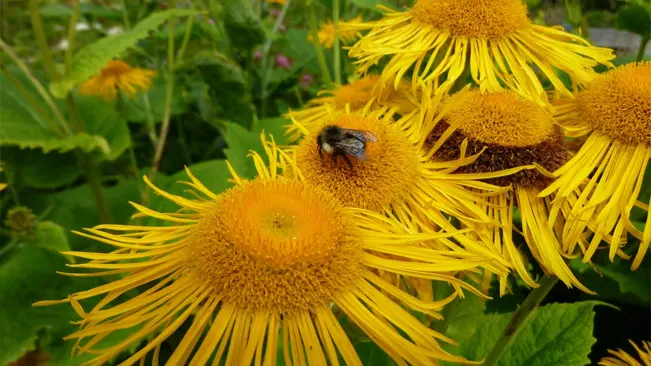
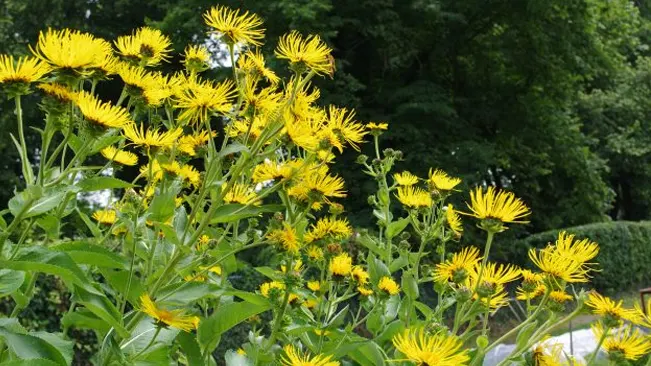
Cultivation and Conservation
Growing Elecampane Plant contributes to both botanical diversity and conservation efforts. Its easy cultivation and robust nature make it a sustainable choice for gardens, while its traditional medicinal uses highlight the importance of preserving herbal knowledge and plant species.
Nature’s Perfume
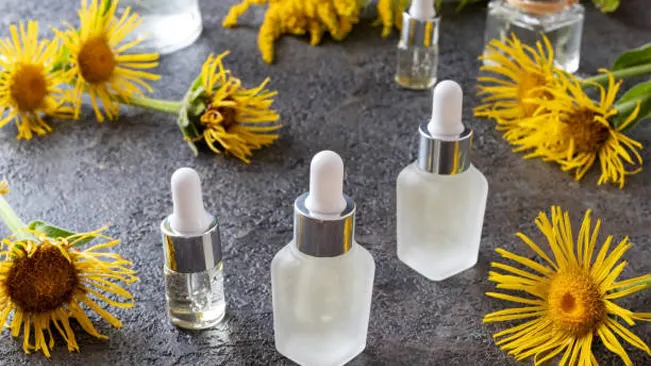
Elecampane Plant’s fragrance is a complex sensory experience, combining earthy, rich undertones with hints of spicy, camphor-like aroma. The scent is most pronounced in the plant’s roots, where essential oils reside, releasing a smell often compared to violets or camphor when disturbed or bruised. This delightful, multifaceted fragrance is not only enjoyed in gardens but is also appreciated in aromatherapy for its calming and soothing properties.
In gardens and wild settings, Elecampane Plant’s presence is subtly announced by its unique aroma, particularly during warm days when the sun encourages the release of its fragrant oils. This characteristic makes it a valuable addition to sensory gardens, where the focus is on creating an immersive experience that engages all senses. The plant’s aroma adds a layer of depth to the garden’s atmosphere, enriching the overall sensory experience for visitors.
In traditional herbal practices, the fragrance of Elecampane Plant has been utilized for its potential therapeutic benefits. The roots, when dried and included in herbal sachets or potpourris, impart a long-lasting, pleasant aroma that is believed to help with relaxation and stress relief. In some cultures, the dried roots are also used in making herbal incense, contributing not just a pleasant fragrance but also tapping into the plant’s historical use in medicinal remedies.
Soil Stabilization
Elecampane Plant, with its deep and extensive root system, plays a crucial role in stabilizing soil, preventing erosion and preserving the integrity of the landscape. Its roots penetrate deeply into the soil, binding it together, which is especially beneficial on slopes or areas prone to soil degradation. This characteristic makes Elecampane an invaluable plant in efforts to maintain and restore healthy soil ecosystems.
The dense foliage of Elecampane Plant also contributes to soil health by providing ground cover, which reduces the impact of raindrops on the soil, thus minimizing erosion. The leaves and stems, when they decay, add organic matter to the soil, enriching its structure and nutrient content. This cycle of growth and decay supports the overall health of the soil, making it more fertile and robust.
In addition to its direct benefits to the soil, Elecampane Plant’s ability to thrive in a variety of soil types makes it a versatile plant in land reclamation and conservation projects. Its adaptability and hardiness enable it to be used in diverse ecological settings, from restoring disturbed lands to enhancing the stability of natural habitats. This underscores the plant’s role as a guardian of the earth, contributing to the ecological balance and sustainability of the environments it inhabits.
Common Uses
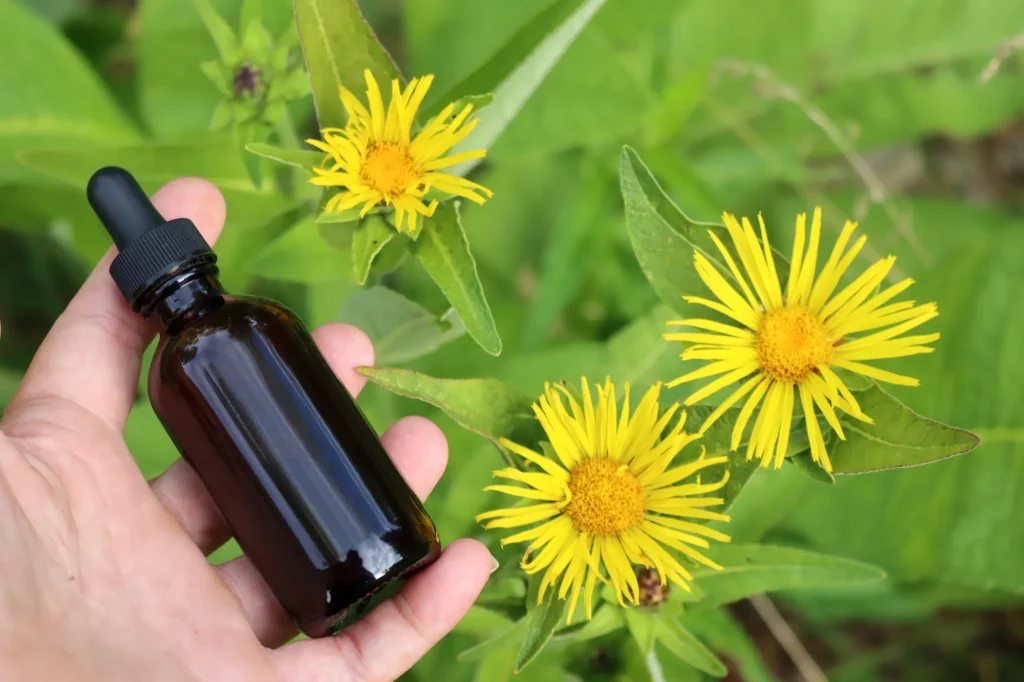
Elecampane Plant has a long history of medicinal use, primarily for respiratory issues like bronchitis, where it serves as an expectorant to ease coughs. Its roots, rich in inulin and helenin, are believed to possess antimicrobial and anti-inflammatory properties, making them a staple in traditional herbal medicine. These roots have been used in various forms, such as tinctures, syrups, and teas, to address a range of health concerns.
In the culinary world, Elecampane’s roots have been historically candied as a confectionery. Their slightly bitter and aromatic flavor also makes them a unique ingredient for flavoring liquors and some rustic dishes. This versatility in the kitchen highlights the plant’s adaptability from traditional medicine to contemporary culinary uses.
Elecampane also finds a place in home gardens for its ornamental value, with its large, bright yellow flowers and imposing stature. Gardeners appreciate it for its visual appeal and for its ability to attract pollinators, contributing to the garden’s ecological balance. Thus, Elecampane’s uses extend beyond the functional, encapsulating both aesthetic and environmental significance.
Benefits
Elecampane is renowned for its respiratory health benefits, particularly as an expectorant for coughs and bronchitis, making it a valuable herb in cold and flu remedies. Its roots contain inulin, which is beneficial for lung health and combating infections. The antiseptic properties of the root are also useful for minor wounds and skin irritations.
The plant’s roots have been traditionally used to aid digestion and stimulate the appetite, leveraging its bitter compounds. This makes it a useful herb for those with digestive issues, helping to regulate gut health and improve overall digestion. Its mild diuretic properties also contribute to its usefulness in addressing water retention issues.
Elecampane’s antimicrobial and antifungal properties have made it a subject of interest in modern herbal research. Its potential as a natural treatment for certain bacterial and fungal infections highlights the continuing relevance of this ancient herb in contemporary herbal medicine. This underscores Elecampane’s role as a holistic treatment option, offering benefits that span various aspects of health and well-being.
Different Species
Inula conyzae
(Ploughman’s-spikenard)
Inula conyzae, commonly known as Ploughman’s-spikenard, is a perennial herb found in Europe and Western Asia. It typically grows in grassy and rocky places and features small, yellow, daisy-like flowers grouped in a dense cluster atop its stems.
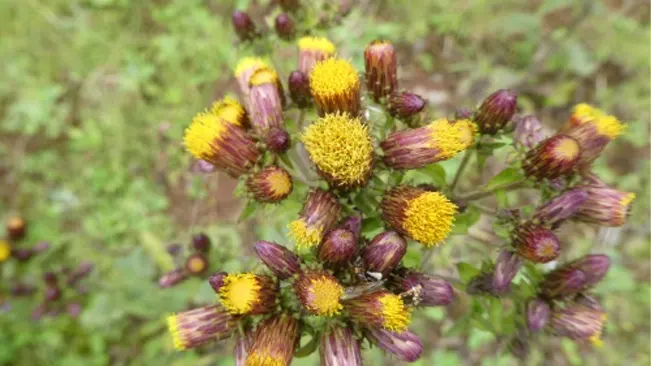
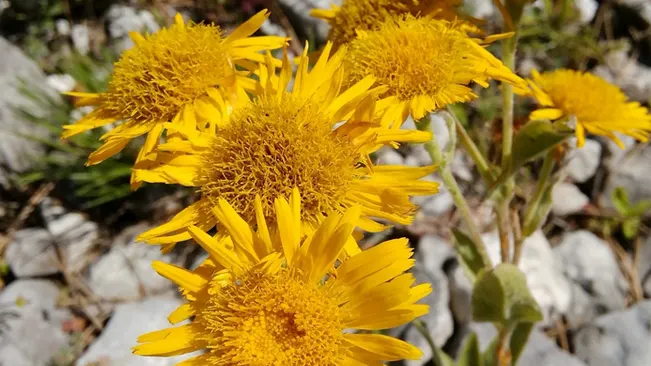
Inula oculus-christi
(Christ’s-eye)
Inula oculus-christi, or Christ’s-eye, is another species from the Inula genus. This plant is known for its striking yellow flowers that bloom from June to September and is often found in meadows and on roadside verges in its native habitats.
Inula hirta
(Hairy Inula)
Chinook hops bring a robust piney and spicy aroma with a subtle hint of grapefruit, highly valued for their dual-purpose use in bittering and aroma contributions in brewing.

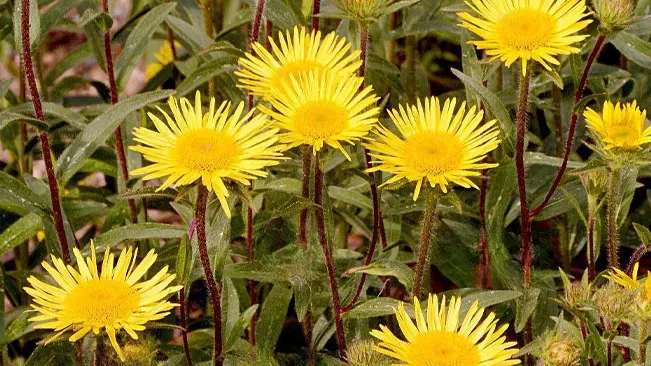
Inula salicina
(Irish Fleabane)
Fuggle hops are a classic English variety, offering a mild, earthy, and slightly woody aroma, perfect for traditional English-style ales, porters, and mild bitters.
Frequently Asked Questions (FAQs)
- What are the medicinal properties of Elecampane?
Elecampane is known for its expectorant, digestive, and antimicrobial properties, commonly used for respiratory issues, aiding digestion, and in herbal remedies. - How is Elecampane used in herbal medicine?
It’s mainly used for respiratory ailments like bronchitis and asthma, and as a digestive aid due to its inulin content. - Can Elecampane be used in cooking?
Yes, Elecampane’s roots can be candied and used as flavoring in culinary dishes, especially in traditional European cuisine. - Is Elecampane safe to consume?
Generally safe when used in moderation, but it’s advised to consult a healthcare professional, especially for pregnant or lactating women. - What is the best way to grow Elecampane?
Elecampane thrives in well-drained soil with full sun to partial shade and requires minimal maintenance once established. - When should Elecampane be harvested?
The roots are typically harvested in the fall of the second year after planting, when their medicinal compounds are most potent. - What are the side effects of Elecampane?
In large doses, it can cause digestive upset and skin irritation; always best to follow recommended dosages. - How do you prepare Elecampane for medicinal use?
The roots can be dried and used to make teas, tinctures, or syrups for medicinal purposes. - Can Elecampane be used topically?
Yes, it’s been used traditionally in ointments and poultices for skin irritations and infections. - What makes Elecampane unique among medicinal herbs?
Its combination of powerful respiratory benefits, digestive aid, and antimicrobial properties, along with its robust growth and striking yellow flowers, make it a standout herb.


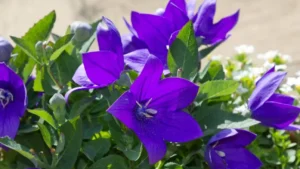


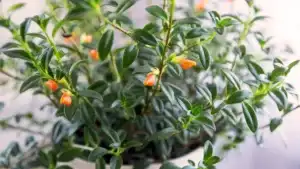
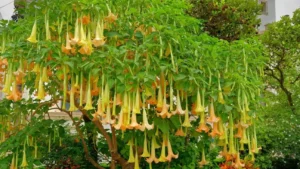



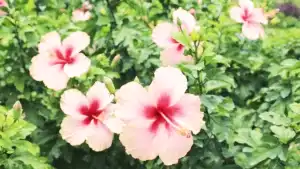
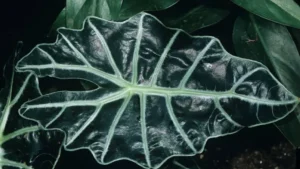
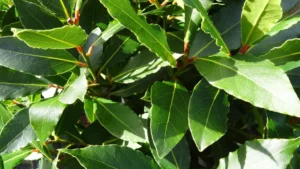
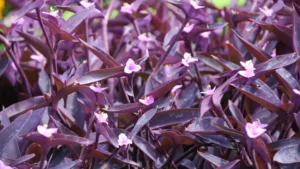
Leave your comment